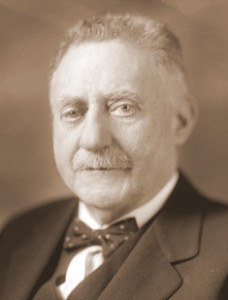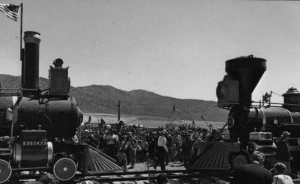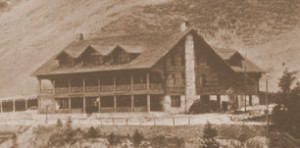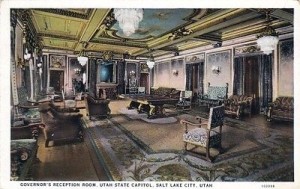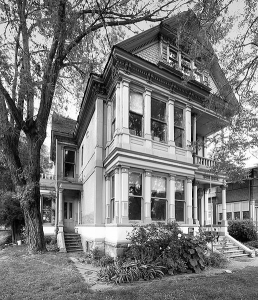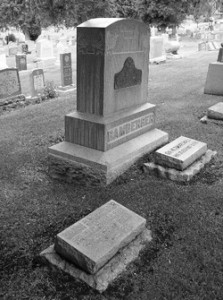Simon Bamberger
Values Codes I – H – E – L – P
Simon Bamberger was born in 1846 in Eberstadt, Hesse-Darmstadt, Germany.
His parents were Emanuel and Helen Fleich Bamberger. They saved enough money for Simon to immigrate to America in 1860, at the age of 14.
Along the way . . .
The sweatshops in the commercial centers of the East Coast did not appeal to Simon.
He headed West to Cincinnati, where there was a larger German-speaking Jewish community, and where it would be easier for him to learn English.
His first job was setting pins in a bowling alley, after which he clerked in a dry goods store.
All the while, he attended public schools to further his education.
Working long hours and saving money allowed him to eventually bring seven members of his family to America.
His older brother, Herman Bamberger, started a dry goods store in Indiana, and Simon joined him for a while.
The Far West beckoned, and the two brothers moved their business to St. Louis, Missouri, where Simon Bamberger became of age and received American citizenship.
In 1868, Simon obtained employment with the Union Pacific Railroad as manager of the company store at the “front of construction,” where he remained until the first transcontinental railroad was completed at Promentory Point, Utah, in 1869.
After working at a local hotel for two years, he had an opportunity to purchase a half-partnership in the White House Hotel in Salt Lake City previously known as the Delmonico.
In 1872, he decided to try his luck in the mines, working first in Nevada, and then back to Utah to Park City and the surrounding area.
Brothers Jacob, Herman, and Louis came to Simon, who set them up in business. They all “made a fortune.”
Simon Bamberger made two trips to Europe in order to gather investors to finance a railroad to the southern part of Utah in order to open up that area for mining.
Simon Bamberger built the Sanpete Valley Railroad and then sold it to a larger railroad, using the profits to develop other projects.
He created a resort on the shores of the Great Salt Lake and another in Hot Springs.
To construct the new resort, he had to build another railroad, which he also used to develop nearby quarries.
Bamberger continued to build railroads into areas with mineral wealth and where he would also build a resort to simulate traffic.
Civic
Simon Bamberger served in the State Senate of Utah.
“The life of the Senate was Senator Bamberger. He is keen in his observation and a most excellent legislator. . . .
His work was forceful and valuable, and he made many a session brighter with the soul of his wit.”
— Senate Journal, 1905
For eight years, he was a member of the Salt Lake City Board of Education.
In 1916, Bamberger was elected as the fourth Governor of Utah – simultaneously becoming the first non-Mormon, first Jew, and first Democrat to hold that office.
While in office, he insisted that the legislature balance the state budget, create a public utilities commission to regulate the price of electricity and gas, and banned gifts by utility companies to public officials.
He created a state department of public health, instituted water conservation, advocated for a lengthened school year, and pushed for the non-partisan election of judges.
Bamberger, being a teetotaler, supported prohibition.
During the first part of his governorship, Bamberger had a Republican Legislature which held back most of his reforms.
Eventually, there was a large Democratic majority, allowing Governor Bamberger to see most of his platform voted into law.
Being 75, at the end of successful 4 year term, Simon Bamberger declined re-nomination and retired to manage his many business interests.
Community
Simon Bamberger was one of the forces behind the building of Congregation B’nai Israel.
At its dedication in 1891, he was part of the opening procession.
Bamberger handed the official keys of the new building to the President of the Congregation, Mr. Siegel, signifying its official dedication.
He helped establish the Jewish Agricultural Colony in Clarion, Utah, which lasted only a few years, between 1910 and 1915.
He was also a generous donor to charity, most of which was done anonymously.
Stories abound in which widows in need ordered a sack of coal, only to find a ton delivered and their money refunded.
Simon Bamberger had a reputation of being absolutely fair and square in all his dealings, earning the respect of Mormons despite being a “Gentile,” as Jews were called by Mormons in the early days of Utah.
Fraternal
In 1886, Simon Bamberger was a Charter Member of the Salt Lake City’s chapter of the International Order of Odd Fellows.
Family
Simon Bamberger married Ida Maas in Cincinnati in 1881. Together they had four children
Simon Bamberger died in Salt Lake City in 1926.
He is buried at B’nai Israel Cemetery in Salt Lake City.
Sources
- S. George Ellsworth, ed., “Simon Bamberger: Governor of Utah,” Western States Jewish Historical Quarterly 5/4.
- Juanita Brooks, The History of the Jews in Utah and Idaho (Western Epics, 1973).
